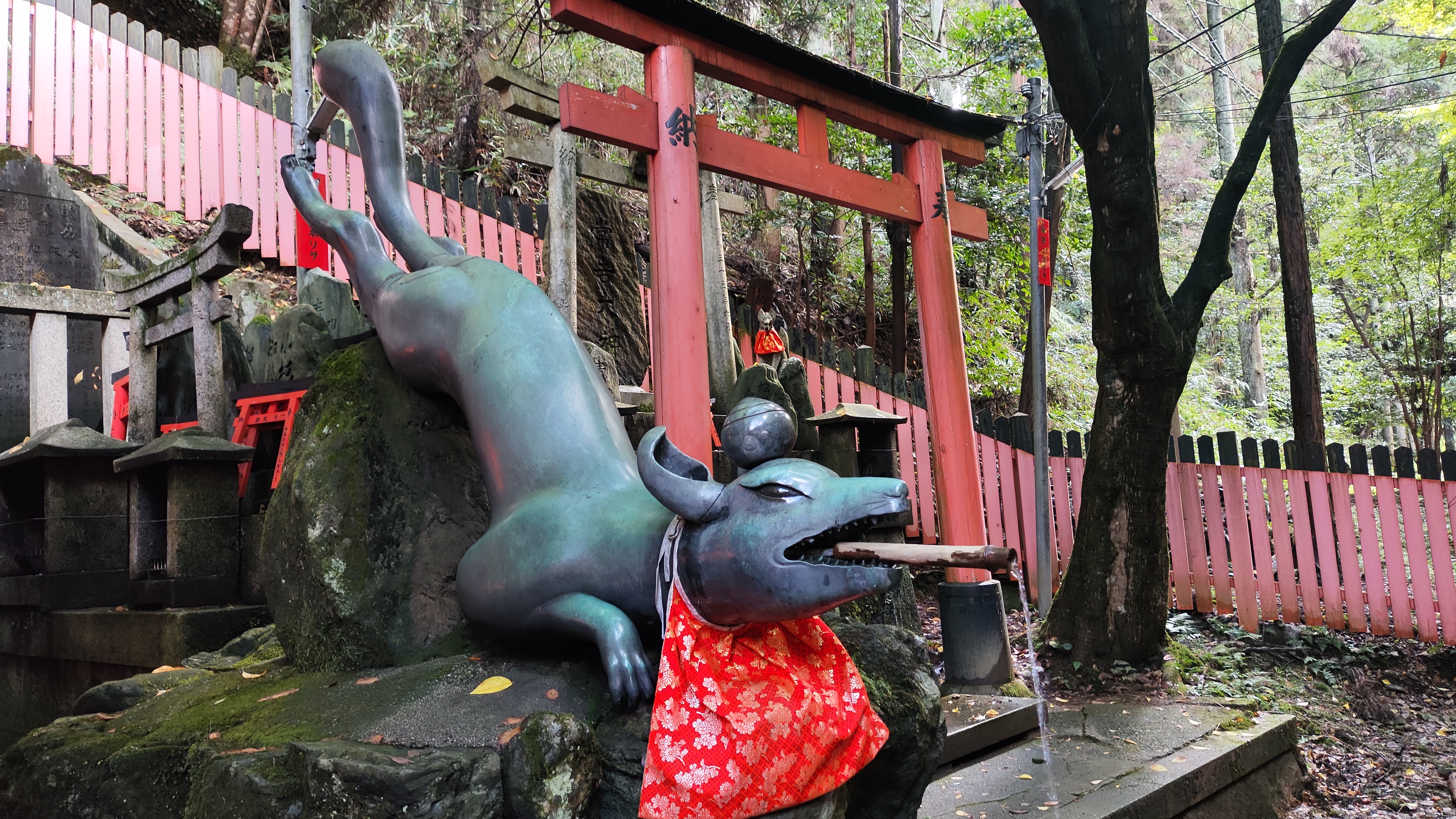Kyoto served as the capital of Japan for over 1,000 years from 794 to 1868. During this time, it became a center of culture, art, and learning. Many of Japan’s most iconic temples, shrines, and palaces were built in Kyoto. We were excited to go to Kyoto and had added an extra night, because there was so many things we wanted to see. We weren’t the only ones who had thought like that. The historical sites of the city were packed with tourists.
Fushimi Inari-Taisha
Fushimi Inari-Taisha, one of Kyoto’s most iconic shrines, is dedicated to Inari, the Shinto deity of rice, sake, and foxes. The shrine is renowned for its thousands of red/orange-colored torii gates, which form a never-ending tunnel leading up to the shrine’s summit. These gates, donated by businesses and individuals, are a symbol of gratitude and a wish for prosperity. Apparently there are more than 10.000 of this torii at the shrine.

Nanzen-ji
Nanzen-ji is a Zen Buddhist temple nestled in Kyoto’s Higashiyama district. Founded in 1291 on the site of a former imperial villa, Nanzen-ji serves as the headquarters of the Nanzen-ji branch of the Rinzai Zen sect. The temple’s expansive grounds are adorned with meticulously landscaped gardens.

The Philosophers Path
The Philosopher’s Path is a picturesque walking trail that winds along the Kamogawa River in Kyoto, Japan. Nishida Kitaro, one of Japan’s most famous philosophers is said to practice meditation while walking this route on his daily commute to Kyoto University. Hence the name…

Nishiki Market
s a vibrant and historic market in Kyoto, Japan, renowned for its wide variety of fresh produce, seafood, and traditional Japanese goods. Often referred to as the “Kitchen of Kyoto,” the market is a labyrinth of narrow alleyways lined with small shops and stalls.

Arashiyama bamboo forest
We’ve been in bamboo forests before, but this forest north of Kyoto is huge.

Kinkaku-ji
Kinkaku-ji is a Zen Buddhist temple in Kyoto, famous for its three-story structure entirely covered in gold leaf. Its reflection in the mirror-like pond in front of the temple creates a breathtaking scene. Built originally as a villa for the shogun Ashikaga Yoshimitsu, Kinkaku-ji was later converted into a Zen temple.

Kyoto Castle
Kyoto Castle, a symbol of Japanese feudalism, stands majestically in the heart of Kyoto. Originally built in 587, the castle has undergone numerous reconstructions and renovations throughout its history. We were very impressed by the paintings inside, but pictures weren’t allowed & the ninja-museum-guard made absolutely sure nobody who made a picture left the museum alive.

Higashi Honganji
Higashi Honganji is a prominent Buddhist temple, belonging to the Jodo Shinshu sect. It was founded in 1591 by the Buddhist monk Rennyo. The temple complex is renowned for its grand architecture, including the iconic Daishodo, a massive wooden hall housing a colossal statue of Amida Buddha.

Kyoto Tower
Kyoto Tower is an observation tower built in 1964. The 800-ton, 131 meter high steel tower stands atop a 9-story building, which houses a hotel, modern shops & restaurants. Together with the modern station Kyoto Tower symbolizes the modern Kyoto.

Kyoto Station
Seen from a-far the station is plainly ugly. But when you come near and go into the station, you can walk around for hours. The inside is absolutely brilliant. When we left Kyoto our train left at platform 0. Who invents a joke like that? Platform 0.

More pictures of Kyoto, click on a pic & scroll:
You feel energized & inspired by our stories? You can always energize us as well & buy us a coffee (or a beer 😊) . Our blog doesn’t run ads & we mention businesses or places just because we like them.









































































